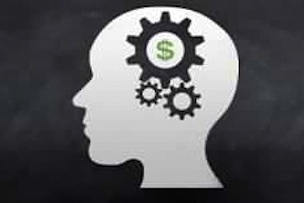If you are a trader, it is almost a certainty that you have had to deal with the ups and downs of trading streaks… and the effect they have on your psychology.
Today, I am going to dig into some detail about this topic of trading streaks in data. I will provide a couple quick and easy practices that you can try to help balance out the emotions that accompany trading streaks.
And to be clear, when I talk about trading streaks, I am talking about when it feels as if you are so out of synch with the market that you can’t hit a single profit target. Or, alternatively, when it feels as if you have the hot hand and can do no wrong. These trading streaks, I would argue, perhaps have more to do with probability theory than with your psychology and skills as a trader.
So when you are on a bad losing streak, do not worry, you aren’t as bad as you think you are. And consequently when you are on a fantastic winning streak, you aren’t as good as you think you are. Your mindset should be balanced and in a neutral state, because the distribution of your trade outcomes are completely random. We know that one trade’s outcome has nothing to do with another trade’s outcome.
With this in mind, lets go a little further in depth.
We know that as traders we must have an edge, we need some advantage on the market, even if it is only a small one. This naturally inclines our minds to think that if we have an edge on the market, we will not have to deal with any serious losing streaks. That is surely a mistake. I will provide a simple example to show that even with 50% odds (or no edge), one-sided streaks in random data can be stunning.
For instance, try flipping a coin 100 times and recording the outcome of each toss. If you have no background in probability this one exercise can teach you a lot about what may be happening in your trading. When some people run this exercise, they may be surprised to the outcome. It is possible that a few people will have something like 70 heads and 30 tails. Well aren’t our odds 50/50? We would assume over a sample size that it would be closer to 45/55 or even to 40/60. Also, in some exercises, you will have what feels like “unrealistic” streaks. Understand that these “unrealistic” streaks are still well within the bounds of probability. The first time I tried this exercise, I actually had a streak of 17 tails. That seemed impossible to me.
What can we learn from this simple observation into probability theory?
Well we know we need a larger sample size to filter out the noise of shorter-term fluctuations. And that is why I think it is absurd of people to obsess over market “calls”. I do not care about the outcome of one trade, fifty trades or even 100 trades. What was the outcome of 1,000 trades or 10,000 trades? However, there is an interesting conundrum here. The larger the sample size of data, the higher probability of what we could classify as “unrealistic” trading streaks.
So keep that in mind during your roller coaster ride of trading outcomes. All in all, this observation truly should be speaking to you towards the randomness of trading outcomes. As I said, people assume that because we have a discretionary impact in trading or that because we have an edge, that we are somehow alleviated from these nuisances. Please learn from this simple exercise that it is best to keep a neutral state of mind when faced with these trading streaks. Continue to act on your trading methodology with discipline and everything else is just random.
More from Anthony: Profitable Trading Starts With Riding The Bus
Twitter: @TraderTorchia
Any opinions expressed herein are solely those of the author, and do not in any way represent the views or opinions of any other person or entity.








